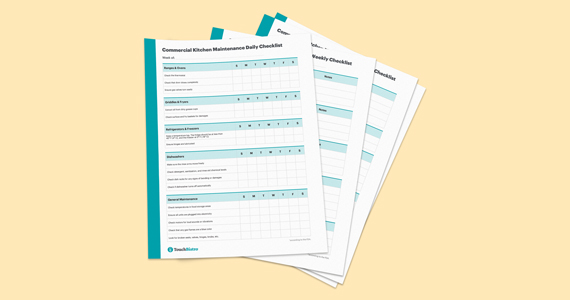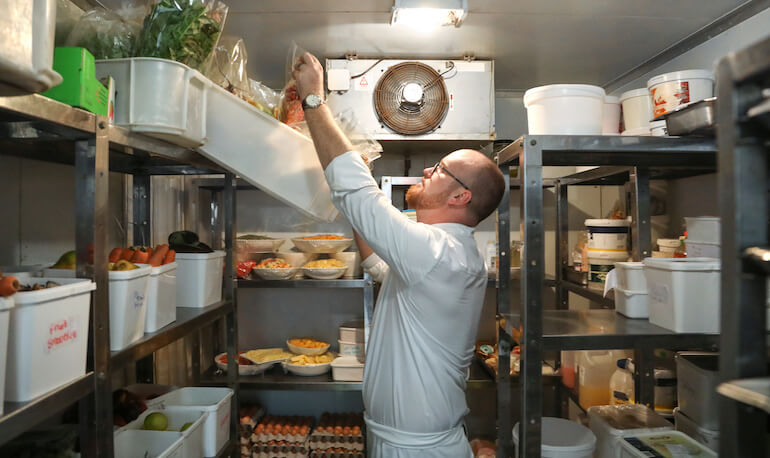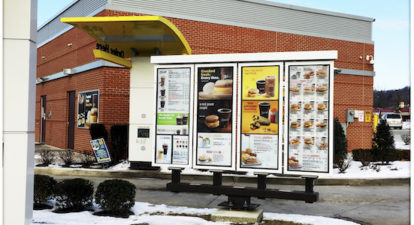As a restaurateur, your typical day is often spent attending to one matter or the other. From financial projections and menu management to vendor coordination and staffing shortages, it may seem like you can never catch a break. Yet, that’s just the tip of the proverbial iceberg. There are other matters that require constant attention as well and one of them is restaurant maintenance.
From the front of the house to the back, did you know that getting restaurant maintenance right can improve your operations, save you considerable costs (without compromising on service quality), and even help you get better customer reviews? Below, we delve into seven maintenance challenges that are unique to the restaurant business and how you can proactively handle them so that they don’t complicate your already busy day. Before we discuss that, let’s take a quick look at restaurant maintenance and what it typically entails.
In this article, we’ll discuss:
- What is restaurant maintenance?
- What restaurant maintenance entails
- Top seven restaurant maintenance challenges
- Restaurant maintenance best practices

Use this kitchen equipment maintenance checklist to help extend equipment life, reduce utility consumption, and prevent unexpected breakdowns.
What is Restaurant Maintenance?
“Restaurant maintenance” is a broad term that refers to all the activities required for the proper upkeep of equipment and infrastructure in a commercial dining facility.
Unfortunately, even though restaurant owners acknowledge the importance of maintenance, the busy pace of work often takes their attention away from adequate maintenance. The result: it’s business as usual and maintenance is thought of only when something breaks.
What Does Restaurant Maintenance Entail?
The scope of a restaurant’s maintenance needs will largely depend on the size of the business, the type of venue, and the complexity of the physical assets owned. Still, in general, restaurant maintenance will usually fall under one of two broad categories. Those categories are:
General Daily Upkeep of the Premises
Typically, these activities occur on a very regular basis (daily, weekly, monthly, etc). They include tasks like cleaning and disinfection, all types of janitorial work, and trash removal.
Kitchen Equipment Maintenance
This category covers the maintenance of all the machinery and equipment that are critical for the hitch-free production of meals and smooth operations generally at the restaurant. Activities in this group are handled by trained technicians and usually occur at well-planned intervals. They may happen quarterly, monthly, or yearly. Examples include painting, HVAC servicing and repairs, oven repairs, and so on.

Use this kitchen equipment maintenance checklist to help extend equipment life, reduce utility consumption, and prevent unexpected breakdowns.
Top 7 Restaurant Maintenance Challenges
Now that we’ve covered the basics of restaurant maintenance, let’s dive into the top seven challenges today’s restaurateurs face.
1. Restaurant Maintenance Consistency
With hungry patrons to attend to and the endless activity in the kitchen, there’s always the risk of overlooking maintenance matters. Unfortunately, inadequate upkeep in a restaurant tends to cause problems for everyone.
The trick is to delegate: forget about trying to do or check everything yourself – and don’t micromanage. In this highly competitive business, you can set the bar higher if your staff are consistent about maintenance in every corner of the restaurant. And, remember that every detail matters: the state of your dining furniture, your restrooms, HVAC, and so on.
However, with the frantic pace of work, staff might perform their maintenance tasks thoroughly today, but not so thoroughly tomorrow. Also, they might try to cut corners or take shortcuts. You can make it easier for them to stay consistent daily, especially in high-risk areas like the kitchen.
The best way to ensure staff don’t cut corners is to standardize and automate your processes – especially for monotonous tasks. Start by researching digital tools and automation. For instance, you can try to use resources like a commercial kitchen maintenance checklist. In addition, consider creating opening and closing kitchen equipment checklists for staff.

Use this kitchen equipment maintenance checklist to help extend equipment life, reduce utility consumption, and prevent unexpected breakdowns.
Furthermore, you can make it easier for them to tick off maintenance tasks by customizing these checklists for daily, weekly or monthly usage. This practice helps to ensure that your equipment is being properly maintained as intended at the expected intervals.
2. Health and Hygiene
Regardless of the size of the restaurant that you run, hygiene will always be a top priority. Therefore, doing everything possible to keep your entire food preparation setup in excellent condition is not just common sense, but a prerequisite to remaining in business.
That said, there are several areas that need special attention – specifically, your restroom, kitchen, and any food preparation and storage areas. All it takes to damage your business reputation and sales is the negative publicity of repeated reports of poor hygiene from your customers. To enable you to keep your space in the best possible shape, frequently assess your facility by asking questions like “Are we ready for an unannounced food safety audit?”, or “And we are confident that even the most demanding guest would be satisfied with our level of hygiene?”.
Fortunately, restaurant maintenance will help to proactively minimize these problems. Here are some practices that can help:
- Regular in-house hygiene audits
- Frequent, but unobstructed, cleaning schedules that don’t interfere with customers while they are dining
- Prompt refuse disposal and proactive pest control
Aside from the above, an effective way to ensure compliance with food hygiene standards even in the busiest restaurants is to create simple, standardized reminders that staff can replicate daily to reduce the risk of food contamination. For example, cleaning procedures can be made into bold signs and posted at strategic points for staff to see. This kind of visual reminders
help to keep neatness top of mind.
Here’s an example of a free restaurant cleaning checklist that will help your staff to carry out a thorough cleaning of your entire venue.

3. Safety Management
Picture the typical busy restaurant today; it’s a fast-paced, high-pressure work environment. Added to the fast pace of work, as your waiters move food around, it’s likely that liquids and drinks could spill – increasing the risk of slips and trips. It’s no surprise then that slips and trips are a leading cause of restaurant accidents.
Being ever mindful of these risks, you can adopt the following tips to help keep everyone on the premises safe:
Floors
Make it mandatory to clean any spills quickly. If possible, assign a staff member to handle this. Additionally, routinely check for broken tiles, torn carpets, and other trip hazards.
Fire
When it comes to mitigating fire hazards, prevention is always best. Nevertheless, fire remains a common risk in restaurants. The combination of open flames, superheated grease, potential electrical hazards, and flammable materials are common causes of restaurant fires.
Electrical hazards
Almost every activity in a commercial kitchen requires the use of one electrical gadget or the other. Even so, these gadgets present serious hazards when used carelessly.
Some of the inherent electrical dangers in restaurants include:
- Faulty, worn, or frayed wiring in the building conduits or in the restaurant equipment and gadgets.
- Damaged outlets or connectors. Never use domestic outlets in areas of the restaurant that are prone to splashes of water and other liquid; use industrial outlets instead.
- Bodily contact with exposed live cables. Regularly inspect the wiring and repair or completely remove frayed portions.
- Tangled, frayed, cracked, or otherwise overloaded damaged extension cords – get rid of them immediately.
An electric shock is no joke. Restaurant workers should be regularly trained to notice these hazards and report to their supervisors. Staff should report if they notice sparks, unusual warmth, or strange sounds when using appliances and gadgets.
Following these rules can help ensure that the electrical risks in even the busiest kitchens are kept to the barest minimum.

Use this kitchen equipment maintenance checklist to help extend equipment life, reduce utility consumption, and prevent unexpected breakdowns.
4. Inventory Management
Another maintenance challenge for restaurants is inventory management.
The fact is that inflation and food costs are on the rise. In light of this constraint, it makes perfect business sense that restaurateurs will strive to proactively manage their stock and inventory.
So how does this relate to restaurant maintenance? Through better storage. Considering the relatively short shelf-life of food preparation materials, restaurant equipment maintenance can help to keep vital cooling and other storage equipment in good working condition.
When a restaurant can order and store all its stock with no concerns about spoilage, it also helps its supply chain management. They can order inventory, restock their shelves, and avoid tying down capital by utilizing just-in-time ordering.

5. Optimal Asset Management
Every piece of equipment in a restaurant is designed to fulfill a specific part of the service delivery process. Still, having all the right machinery and equipment will make little difference to your restaurant if you lack a well-planned strategy to help keep every piece of equipment functional for as long as possible.
The challenge is that, regardless of whether it’s a vacuum cleaner, an oven, or a freezer, each piece of equipment requires adequate attention and a unique set of maintenance procedures to enable it to function reliably. From the ovens to the mixers, HVAC units, fryers, and stoves, any breakdown can severely impact your meticulously planned workflow and disrupt your services for an entire day. For instance, imagine the impact of your central air conditioning system suddenly failing on a busy and warm summer day.
As a result of all these concerns, keeping all the moving parts and machines in your restaurant working smoothly can often seem nerve-wracking. But, it doesn’t have to be that way. By taking the time to set up and implement a proactive maintenance plan, you can focus on running your business with the assurance that your physical assets are receiving the best care.
6. Regulatory Compliance
Almost all business types imaginable need to obtain certain state and federal permits and licenses to open and operate. However, when consumer health could be affected, the stakes are much higher.
Due to the sensitive nature of food and the constant risk of contamination, restaurants are subject to multiple regulations in most countries. To mention just a few, you will need to satisfy the requirements of the following agencies depending on your location:
- CFIA (Canada)
- FDA, FSIS, FDA (USA)
- FSA (UK)
- County health departments (Australia)
That’s not all. On top of all the regulations and guidelines, there are usually several renewable restaurant licenses and permits required for restaurants to remain in business.

Know exactly how to get each license and how much it’s going to cost.
Without an adequate and well-streamlined maintenance management system, it would be nearly impossible to track and meet all these requirements. Restaurants can deal with this challenge by leveraging the powerful recording and reporting capabilities of maintenance software. The best way to do so is by deploying a computerized maintenance management system (CMMS).
Specifically, setting up a thorough maintenance management system aided by a CMMS will help restaurants to:
- Store health and safety information for all employees and update these records in real-time.
- Serve as evidence that your operating procedures exist and that they are regularly implemented.
- Ensure that all internal audits and testing are completed correctly and on schedule.
- Maintain records of preventive maintenance completed over the years.
- Create and update several reports simultaneously ahead of unexpected audits.
- Keep digitized maintenance logs for an audit trail.
By successfully implementing the above, you can confidently handle audits no matter how tough or detailed they might be.
7. Vendor Management
Because there’s usually so much to organize and coordinate, restaurants typically partner with multiple suppliers and vendors. Especially, when there’s a need to execute specialized maintenance jobs such as boiler maintenance or high-risk electrical work (licenses and permits are required due to the dangers involved).
One of the core features of maintenance software is its ability to store and manage all the documentation about your transactions with third-party suppliers, vendors, or contractors. This software enables you to digitize quotes and contracts pertaining to each vendor. All these records are thus easily accessible.
With this kind of repository, it becomes considerably easier to track vendor information over time. You can easily analyze and compare their performance and detect potential problems early enough before they develop into major performance issues.

Use this kitchen equipment maintenance checklist to help extend equipment life, reduce utility consumption, and prevent unexpected breakdowns.
Restaurant Maintenance Best Practices
Considering all we’ve discussed so far, you’re probably wondering how to achieve it all. Here are some essential restaurant maintenance best practices to give you the best chance at maximizing your operations in a sustainable manner.

Recruit A Skilled Maintenance Team
Skilled maintenance staff is out there, but the fast-paced restaurant environment is not suitable for everyone. Therefore, never rush into hiring staff for your maintenance team. You can avoid what could become a never-ending cycle of operational issues and technical problems by taking the time to recruit maintenance workers that already have some experience in the restaurant industry. They will be the most suitable hands for your restaurant.
An Ounce Of Prevention
Regular restaurant equipment maintenance is your most practical choice to avoid disruptive last-minute emergencies. That aside, regularly spaced maintenance is more cost-effective and less overwhelming than trying to catch up on days of deferred maintenance.
You’ve come this far keeping your restaurant running despite multiple stressors – economic stress, fierce competition, and the pandemic, just to name a few. There were probably times when you weren’t quite sure if your business would survive or not. After making it this far, you can improve your chances even further through restaurant maintenance. Doing so can ensure that your restaurant continues to thrive for as long as possible. It might be one of the best decisions you’ll make to ensure the continuity and quality of your restaurant.
Pay Attention to Equipment Procurement
For restaurants of all sizes, equipment procurement is an ongoing process. As kitchen gadgets and machinery wear out, replacing them promptly is an essential factor for churning out delicious meals. However, as you purchase new assets, smart procurement practices will help ensure that you get the expected ROI on your investment. Do the following to improve your returns on each asset:
- Do your due diligence and ask around before deciding on which particular vendor to use.
- Never compromise on the durability of the assets you buy. You’ll be able to utilize items from reputable brands for longer and they are usually safer to use.
- Remember that the cheapest is not always the best.
- As much as possible, invest in energy-efficient brands and models.
Download our free inventory template
Sign up for our free weekly TouchBistro Newsletter







